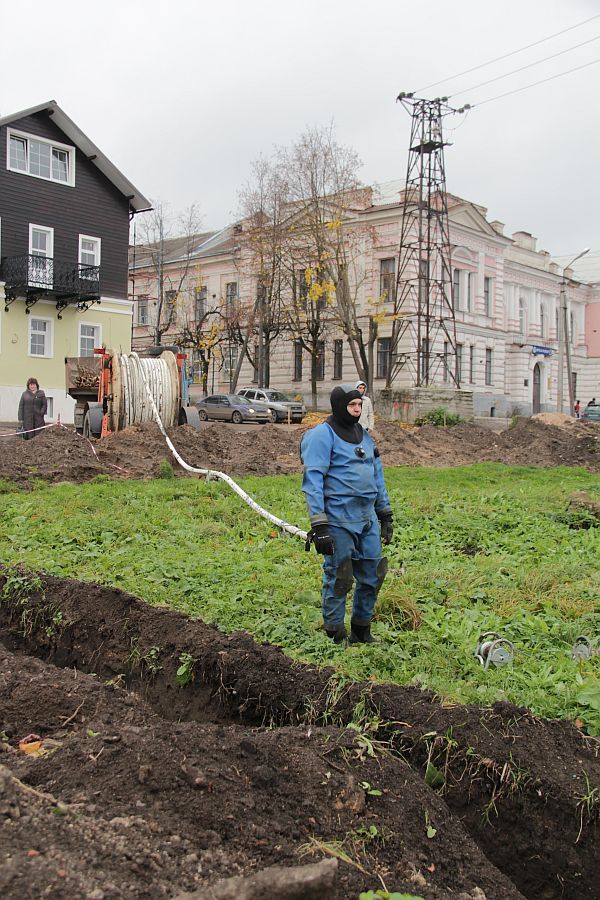Pond as an alternative to cable sewage

When pulling a cable, telecom operators face many different obstacles. These are highways with heavy traffic, forests, as well as various water barriers. Under the cut, I would like to tell you exactly how the cable is laid along the bottom of the reservoir, as well as how the riverbed can become an alternative to cable ducts.
Matching
Before talking about methods of pulling a cable across a river, it is worth discussing the time of coordination with the authorities. The ability to lay lines of communication through reservoirs is spelled out in the water code of the Russian Federation. As a rule, coordination begins with the local administration, the regional Ministry of Environment and the agency responsible for environmental protection.
In addition, depending on the status and importance of the reservoir, additional obstacles may arise during coordination. If the river is navigable, then it will be necessary to coordinate laying with the State Inspectorate for Small-Size Ships and River Ports. Certain environmental requirements are put forward to the cable itself and its installation method.
At the bottom of the reservoir
From the point of view of technology - this is the easiest way. The cable neatly fits on the bottom of the reservoir. With a silty bottom, this method of laying will not cause any difficulties at all - the cable gradually sinks into silt, where it will remain for many years.
')
In other cases, before laying the cable along the bottom of the reservoir, a ditch is made, where the cable is then laid. The depth of the moat can reach from 50 to 120 centimeters. To prevent the cable from floating up, it can be fixed with a load. Concrete blocks or cast-iron weights are perfect for this purpose.
Cable laying using a ditch along the bottom of the river can be done in several ways.
The easiest way to dig a ditch with a tractor. However, this method is valid only in shallow waters.
In other cases, it is necessary to “turn on the head”. For example, an excavator is placed on a pontoon and a trench is being dug through it.
And the most traditional tool for tearing trenches at the bottom of reservoirs is a dredger that makes a ditch at the bottom using an underground pump.
HDD
A widely used and most reliable method is horizontal oblique drilling. HDD allows you to pass barriers up to six hundred meters long. For longer distances have to use a special vessel for laying cable.
Directly, horizontal oblique drilling proceeds as follows. At a depth of about ten meters below the plastic pipe is laid, where the cable is then pulled in.
Before laying the pipe, the well is drilled, after which the hole in the well expands to the desired size.
River as an alternative to sewage and power lines
The river bed may act not only as a barrier to the signalman. Several years ago, our forum described a unique one of its kind, when a pond turned out to be the safest place to lay a cable.
In the distant 2007 in Tambov, the company “Lanta” was faced with the task of passing to a part of the city separated from the connected areas by a large number of private sector quarters and old buildings planned for demolition. It was possible to use fiber optic links on trolleybus posts, but in Tambov their rent was quite expensive.
Laying the cable through the sewage system of Rostelecom also required unbearable costs. Going through all the possible options, it was decided to pull the fiber along the river channel right along the bottom. It is noteworthy that the operator didn’t have such an experience, so they had to be creative on the fly.
An optical ring along the transmission lines was built around Tambov. One of these lines passes near the river bed. In this place was made a descent from the support. Next, the cable goes through the ground to the river. Directly along the river is about five kilometers of fiber optic links. At the exit point from the river, the cable goes underground to a nine-story building, where it rises through a pipe to the third floor, and further along the wall to the attic.

Cables were laid on the muddy bottom of the river. A raft attached to a motorboat was used as a cable laying machine.
At the pivot points the cable was fixed with small concrete blocks.
The reliability of this method of laying the cable has been tested over the years. Since 2007, there has not been a single rupture or damage to the FOCL passing along the bottom of the river.
Source: https://habr.com/ru/post/401409/
All Articles